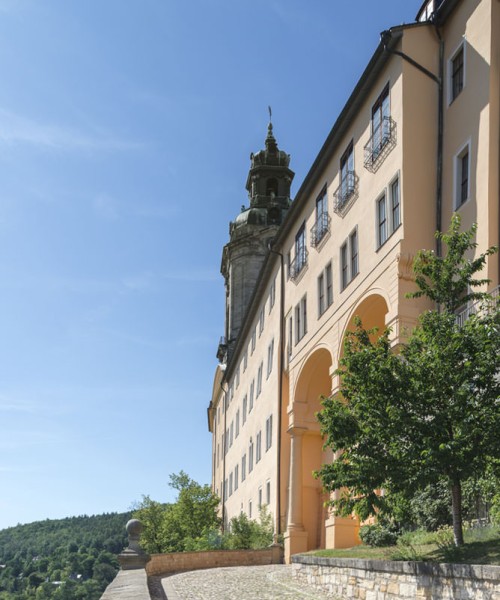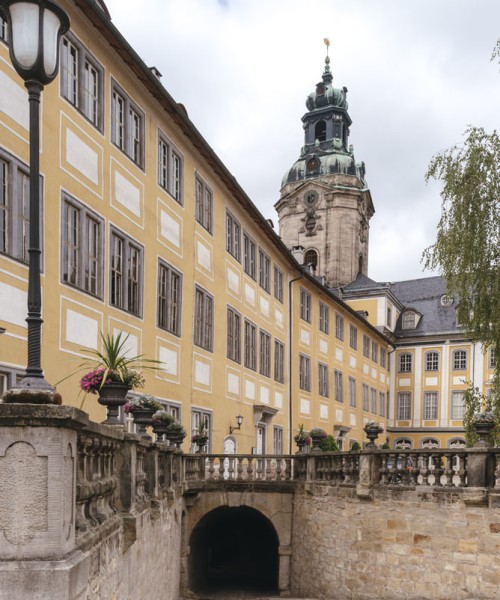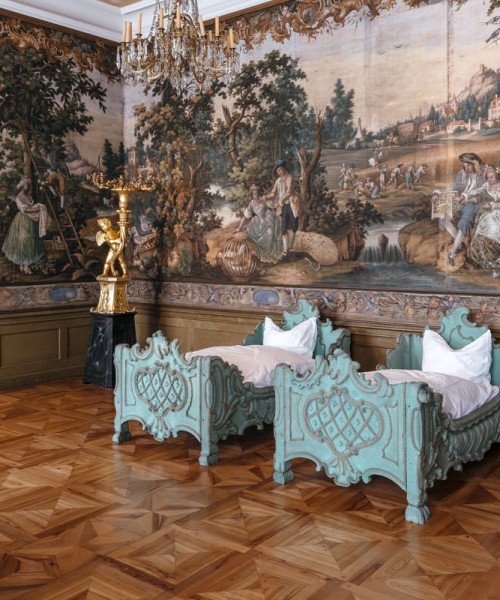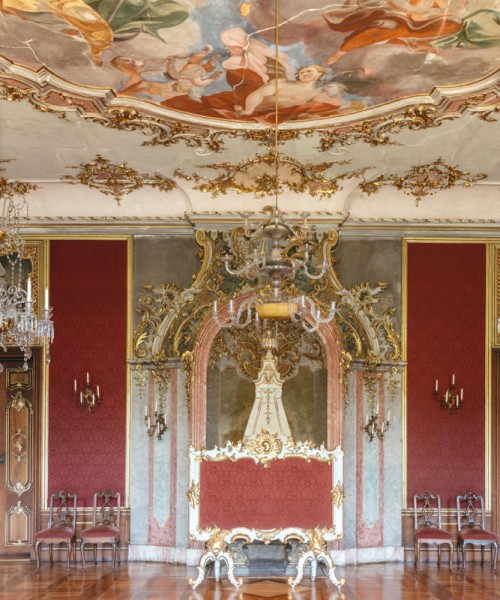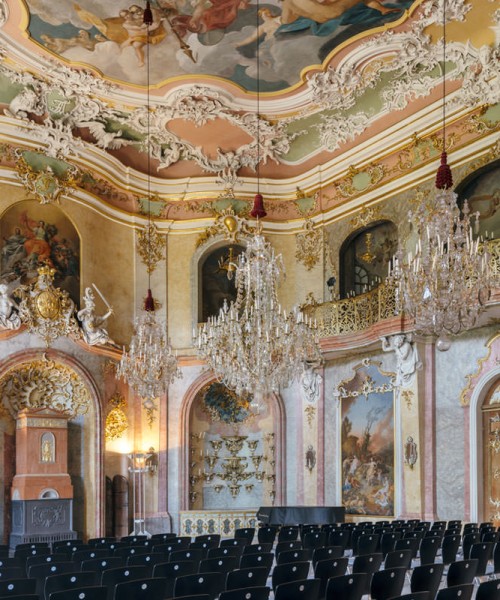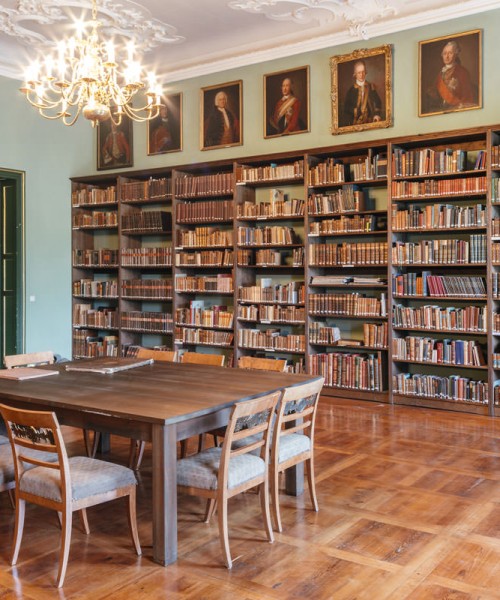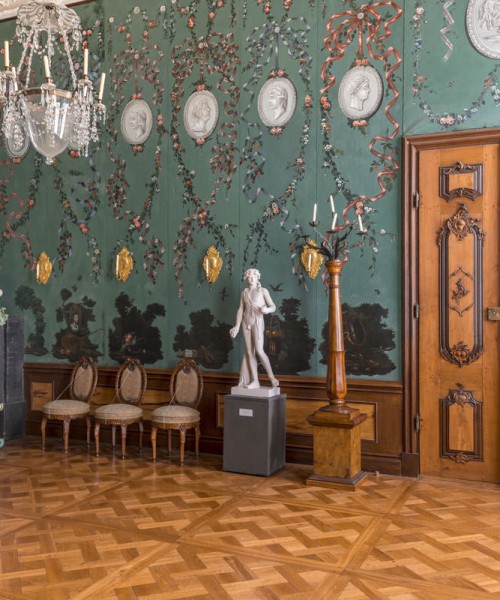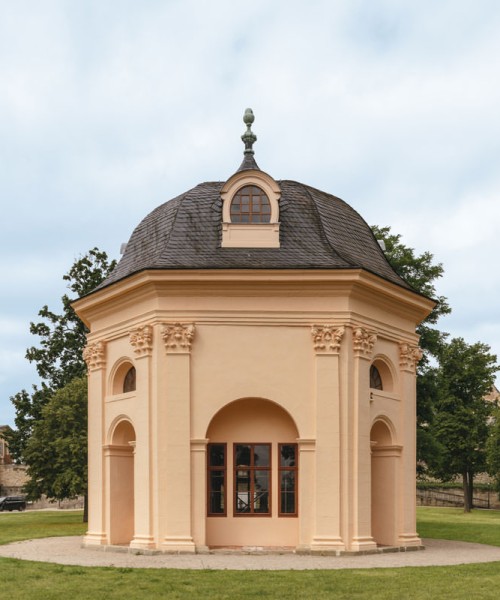Heidecksburg Palace
Thuringian State Museum Heidecksburg
Rising high above Rudolstadt, Heidecksburg Palace is one of the most magnificent baroque residences in Thuringia. Its imposing appearance and ornate furnishings make it an unmissable destination for culture and history enthusiasts. Let yourself be enchanted by the impressive architecture, the richly decorated rooms and the historic atmosphere of this jewel.
A residence with an eventful history
The origins of Heidecksburg Palace date back to the 13th century, when a castle was built on this strategically important site. After a devastating fire in 1735, Prince Friedrich Anton von Schwarzburg-Rudolstadt decided to build a prestigious new building in the late Baroque style. The Saxon architect Johann Christoph Knöffel drew up the plans for the three-winged complex, which is characterized by clear lines and representative austerity.
From 1743, Gottfried Heinrich Krohne took over the construction management and gave the palace a serene elegance with ornate rococo elements. Today, Heidecksburg Palace is an impressive example of the interplay between baroque austerity and playful rococo aesthetics.
Magnificent interiors - a feast for the senses
The heart of the palace is the two-storey ballroom, whose ornate stucco work by Jean Baptiste Pedrozzi and the ceiling fresco “Council of the Gods” by Lorenz Deisinger create an impressive overall picture. The magnificent interior is complemented by supraport paintings by Christian Wilhelm Ernst Dietrich and Johann Ernst Heinsius.
The princely living quarters in the south wing now house the museum's impressive art collection, which includes furniture and paintings from several stylistic periods - from the late Renaissance to Rococo and Historicism. Visitors can immerse themselves in the fascinating world of past centuries and experience the princely way of life at first hand.
A highlight for culture and discovery
In addition to the permanent exhibition, Heidecksburg Palace attracts visitors with changing special exhibitions, concerts and cultural events. As Rudolstadt's landmark, it not only offers a unique view over the town, but also an unforgettable experience for anyone who is passionate about architecture, art and history.
Experience Heidecksburg Palace - a baroque masterpiece that brings history to life!
Amenities and Facilities

Bus
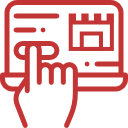
Event location
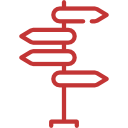
Guided tours

Open

Museum store

Parking

Events

Restroom
Hours of Operation and Ticket Prices
Tuesday to Sunday
10.00 a.m. – 5.00 p.m.
Tuesday to Sunday
11.00 a.m. – 5.00 p.m.

